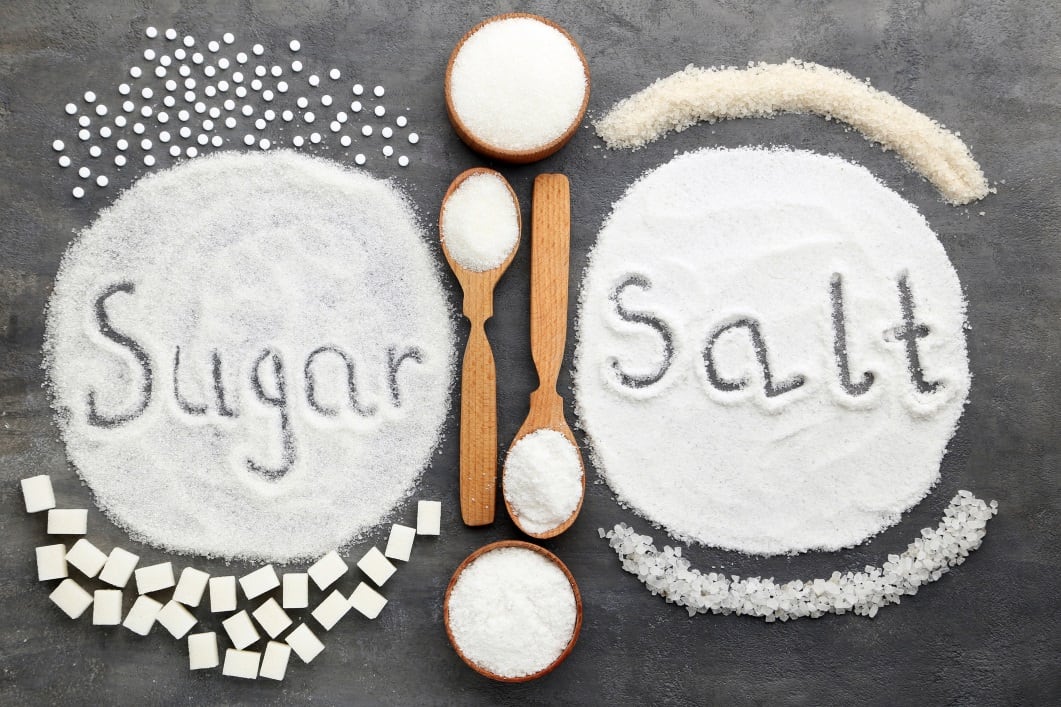Salt and sugar intake has been a major concern for policymakers and food industry players in many markets in recent years, with South Korea being one of the markets that has been most heavily-affected by this direction.
A significant reason for this is soy sauce, which makes up an integral part of South Korean cuisine and is just as much as a staple in consumers’ kitchens and dining tables as rice or bread.
Soy sauce is known to contain very high amounts of salt, giving the briny condiment its flavour; and also a significant of sugars from both added sugar and its wheat content, as wheat is a key ingredient in the fermentation of soy sauce.
As such, public sodium and sugar intake are of great concern to the South Korean government, which recently published the findings of a five-year nationwide survey on this topic. Here are four of the key discoveries that were reported.
1) Sodium intake is still far above WHO recommended levels

The report was based on data from the South Korean National Health and Nutrition Survey from 2019 to 2023, covering over 30,000 respondents.
Overall, the data revealed that the average daily sodium intake had dropped by 4.88% to 3,136mg in 2023 compared to 3,289mg in 2019 when the survey started - but unfortunately this was still far above the World Health Organisation (WHO) recommended daily intake of 2,000mg.
“Although sodium intake decreased over the last five years, the average daily intake is still 1.6 times higher than the WHO recommended level,” Ministry of Food and Drug Safety Oh Yoo-Kyung said.
“Sodium is an essential nutrient but if consumed excessively, there is high risk of chronic diseases such as high blood pressure. This is why the recommended amount is not more than 2,000mg or 5g of salt daily.”
The consumer demographics at higher risk were found to be men (3,696mg compared to women at 2,576mg) and those in their thirties and forties (3,389mg sodium on average consumed every day).
More concerningly, a deep dive into the yearly intake numbers saw that since 2019 there was a yearly decrease in sodium intake until 2022 (3,074mg), but in 2023 there was a bounceback increase of 2% to the most recent value of 3,289mg.
This is a potentially worrying scenario because a lot of consumer health awareness came about during and after the COVID-19 pandemic, but there is also the possibility that this consciousness has faded since then and consumers are gradually returning to traditional dietary habits,
MFDS has stated that it will be working on new policies and regulations to prevent this from happening.
2) Many South Korean staple foods are high in sodium

Soy sauce is used in the majority of South Korean staple dishes, and where it is not then salt will be used - this includes everything from ramyeon noodles to kimchi to stews and more.
“We found from the survey that consumers get more than 50% of their daily sodium intake from everyday dishes such as noodles, dumplings, kimchi, soups, stews, stir-fries, hotpots and so on,” Oh added.
“This amount goes up even higher at any single setting when they eat out, as dishes like fried chicken or pizza will also come into play, but in the long run it is home cooking that contributes the most sodium to diets.”
Analysis by age showed ramyeon to be the top sodium contributor in all consumer groups between six to 11, between 12 to 18, and between 19 to 29; whereas after the age of 30 that kimchi became the top contributor.
“MFDS urges consumers to reduce the consumption of sodium at home, especially in home cooking,” she added.
“There are many potential methods to do this: Using mushrooms, kelp or anchovy powder to replace salt and soy sauce; boil your hams and sausages in water before using them; and serve all seasonings and condiments separately instead of mixing these into the dishes.”
3) Sugar intake is a major issue in younger females

South Korea has overall managed to fare much better in sugar intake compared to sodium, with national intake at between 7.5% to 7.7% of total daily calories (34.6g to 36.8g of sugar) across all five years which is below the WHO recommended amount of 10% daily.
That said, this has not been the case for younger female consumers between the ages of six to 29.
“Female teenagers between 12 to 18 years of age have fared the worst with sugar making up 11.1% of their daily calories, and we believe this is due to their high consumption of breads, fruits, sweetened drinks and ice creams,” said Oh.
“What we do know is that in general, processed foods are making up the majority of sugar consumption for all South Koreans, whether this is via beverages, snacks, bread and so on.”
MFDS urged consumers to replace sweetened beverages with water and processed snacks with fresh fruit to reduce sugar intake.
“Consumers should also look closely at the product labels when purchasing processed foods, as this will help them to choose foods with lower sugar content,” it said.
“MFDS is also supporting the development of processed and prepared foods that are lower in sodium and sugar, alongside efforts to improve public awareness so that people can make better choices independently.”
4) Lowering beverage sugar content alone is not enough

Similar to many global markets, South Korea has also focused a lot of its previous sugar reduction efforts on beverages, but is now finding this to be insufficient to make any holistic change.
“Compared to 2019, the average sugar intake coming from beverages actually showed a 9.5% decrease which we believe is due to the recent trend for zero beverages, which are sugar free drinks,” Oh added.
“This has been particularly obvious among younger consumers in their 20s.”
Unfortunately, it appears that this group has taken their sugar cravings elsewhere on the food aisle, as conversely the sugar intake coming from snacks, break, rice cakes and similar items showed a significant increase over the past five years.
“Since 2019, there was a 3.8% increase in the sugar intake coming from these foods which is not desirable,” MFDS stated.
“Alongside plans for sodium intake reduction, sugar intake will also be a major focus for us in order to ensure that all consumers are able to access healthy diets.”


